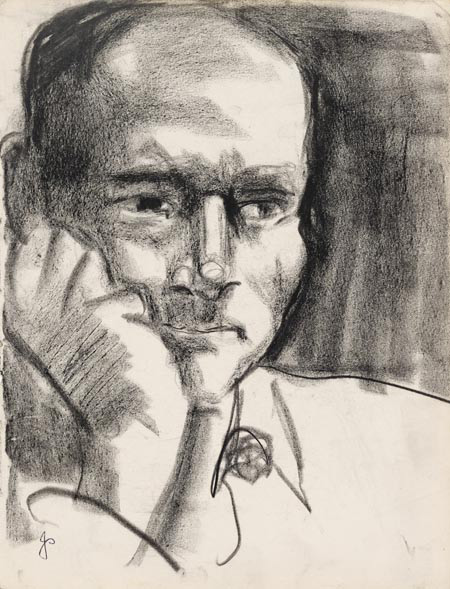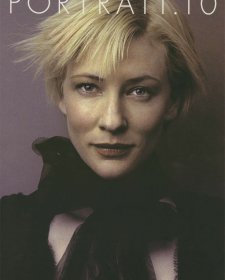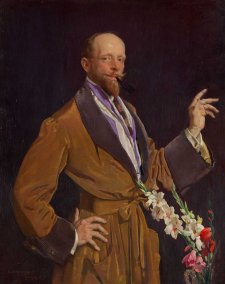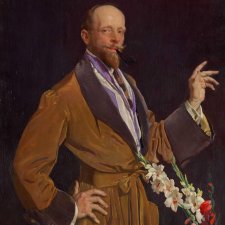Jean Shepeard's 1930 portrait drawing of the Australian painter Roy de Maistre was produced at a pivotal point in de Maistre's career, capturing the artist during the period of transition between the end of his creative output in Australia and the beginning of his career in London.
Roy de Maistre worked as a painter and interior designer in Australia in the early decades of the twentieth century and is most widely recognised for producing Australia's first abstract paintings in 1919. Strongly influenced by his interest in the spiritual and emotional application of colour in art, de Maistre developed a 'colour music' that paralleled similar developments in Europe, placing his artistic activities at the forefront of modern art in Australia.
Despite his importance in the introduction and promotion of modern art in Australia, de Maistre received limited patronage. This situation, perhaps combined with his family and friends' unwillingness to accept his homosexuality, led to his decision to relocate permanently to the more cosmopolitan atmosphere of London in 1930.
De Maistre arrived in London in July of that year and immediately conceived a new identity, changing the spelling of his name from Roi de Mestre to Roy de Maistre, believing that the modern spelling suited a 'modern painter'. In addition he rapidly aligned himself with modernist developments in London, hungry to find artistic acceptance in his new home. Soon after his arrival he also formed an important friendship with the young artist Francis Bacon who had not yet achieved fame, and was concentrating his artistic endeavours on furniture and rug design. The relationship was significant for both artists, de Maistre's stylistic influence on Bacon has led some to describe the artist as the "man who taught Francis Bacon to paint".
It was through his association with Bacon that de Maistre was introduced to the young British actress and artist Jean Shepeard and in November 1930 the three held a joint exhibition in Bacon's Queensbury Mews studio. De Maistre exhibited paintings, Bacon rugs and paintings and Shepeard a number of pastels and drawings.
After studying at the Slade School of Fine Art and the Royal Academy of Dramatic Art, Jean Shepeard carved out a respected career as an actress and artist, appearing in leading theatres throughout London alongside performers, such as John Gielgud, Jack Buchanan, Anthony Quayle and Peggy Ashcroft. Shepeard concentrated her artistic endeavours on the intimate medium of drawing, exhibiting her work with many successful British artists including Augustus John, Lucian Pissaro and Paul Nash.
Little was known of Shepeard's life until a number of papers, drawings and sketchbooks were discovered in a concealed trunk after her death. The contents highlighted her relationship with leading actors and artists, as well as her association with the Bloomsbury set - Vanessa Bell, Virginia Woolf and Aldous Huxley - some of whom became the subjects of her portrait sketches. The 1930 sketch of de Maistre was also discovered in the trunk, alongside a portrait of Francis Bacon. Newspaper clippings pointed to the 1930 exhibition Shepeard shared with the two artists. (For further discussion on the significance of this exhibition refer to Richard Shone, "Francis Bacon in 1930: an early exhibition rediscovered," The Burlington Magazine, April, 1996)
Although it cannot be confirmed, it is reasonable to assume that Shepeard's portrait of de Maistre was included in the Queensbury Mews exhibition. The sketch is an excellent example of Shepeard's intimate approach to portraiture. It shows the 'great sensitivity and beauty of line ... full of full of vigour and character' that a contemporary critic admired in her drawings in the 1930 exhibition. The element of introspection in the work may be a truthful reflection of de Maistre's own character, as he remained somewhat elusive throughout his life, even to those who were close to him.














